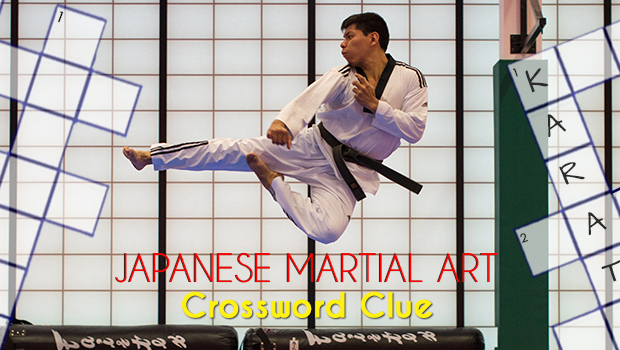Martial arts are a part of Japanese culture

Japanese Martial Arts
Martial arts have been a part of Japanese culture for centuries, and the country boasts some of the world's most well-known and respected forms of hand-to-hand combat. From the graceful movements of Kendo to the powerful strikes of Karate, Japanese martial arts have a rich and fascinating history that is worth exploring.
(6 letters) Aikido: The Art of Peace
Aikido is a non-competitive martial art that emphasizes the use of an opponent's energy against them. Practitioners of Aikido aim to neutralize an attack, rather than defeat the attacker, making it a unique and peaceful form of self-defense. Aikido was developed in Japan in the early 20th century and is characterized by its circular movements and fluid transitions.
(6 letters) Karate: A Striking Art
Karate is one of the most popular martial arts in the world, and is known for its powerful strikes and swift kicks. This traditional Okinawan martial art was developed in the Ryukyu Kingdom and later brought to Japan, where it gained widespread recognition. Karate is a combative sport that is often practiced in a competitive setting, but it also has self-defense applications.
(5 letters) Kendo: The Way of the Sword
Kendo is a Japanese martial art that involves the use of bamboo swords, or shinai, and protective armor, or bogu. Practitioners of Kendo aim to strike their opponent's head, torso, or wrist, while defending against the opponent's strikes. Kendo is a physically demanding sport that requires strength, speed, and endurance, as well as mental fortitude and discipline.
(4 letters) Judo: The Gentle Way
Judo is a modern martial art that was developed in Japan in the late 19th century. It emphasizes the use of leverage and throwing techniques to defeat an opponent, rather than striking them. Judo is a competitive sport that is practiced worldwide and is included in the Olympic Games. It is also commonly used as a form of self-defense and physical exercise.
Martial arts have been a part of Japanese culture for centuries, with roots tracing back to the ancient samurai warrior class. Over time, these warrior arts have evolved and changed to adapt to new challenges and societal shifts, leading to the development of numerous distinct styles. In this article, we will explore the rich history of Japanese martial arts and highlight some of the key moments that shaped the evolution of these unique and fascinating practices.
The Beginnings of Japanese Martial Arts
Martial arts in Japan can be traced back to the 7th century when the earliest forms of combat were developed. During this time, the samurai warrior class was emerging as a dominant force in Japanese society, and they began to develop and refine their own fighting styles. These early styles were heavily influenced by Chinese martial arts and relied on the use of weapons such as swords, bows, and spears.
The Feudal Era: The Emergence of the Samurai Warrior
The feudal era, which lasted from the 12th to the 19th century, saw the continued development and refinement of Japanese martial arts. The samurai warrior class became the ruling class in Japan, and their fighting styles became increasingly sophisticated. During this time, several different schools of martial arts emerged, each with its own distinct techniques and philosophies. The most famous of these schools include the Kendo, Kenjutsu, and Kyudo schools, which are still practiced today.
The Meiji Restoration: The Fall of the Samurai and the Rise of Modern Martial Arts
The Meiji Restoration in the late 19th century marked a major turning point in the history of Japanese martial arts. During this time, Japan underwent a period of modernization, which included the abolition of the samurai warrior class. As a result, many samurai warriors were forced to find new careers, and many of them turned to teach martial arts to make a living. This led to the creation of new martial arts schools, which began to incorporate techniques from other styles and incorporate new elements, such as grappling and strikes.
The 20th Century: The Development of Modern Martial Arts
The 20th century saw the continued evolution of Japanese martial arts. Many of the styles that had emerged during the Meiji Restoration continued to evolve, and new styles began to emerge as well. The most famous of these new styles is Judo, which was created by Jigoro Kano in 1882. Judo was designed to be a sport that could be practiced safely, and it quickly gained popularity around the world. Another important development in the 20th century was the introduction of Karate, which was developed in Okinawa and incorporated elements of traditional Okinawan martial arts and Chinese martial arts.
Conclusion
Japanese martial arts have a rich and fascinating history, shaped by centuries of cultural, political, and social change. From the earliest forms of combat developed by the samurai warrior class to the modern styles of Judo and Karate, these martial arts continue to evolve and thrive in the 21st century. Whether you are a practitioner of one of these arts or simply a fan of their history and philosophy, the journey of Japanese martial arts is one that is well worth exploring.
